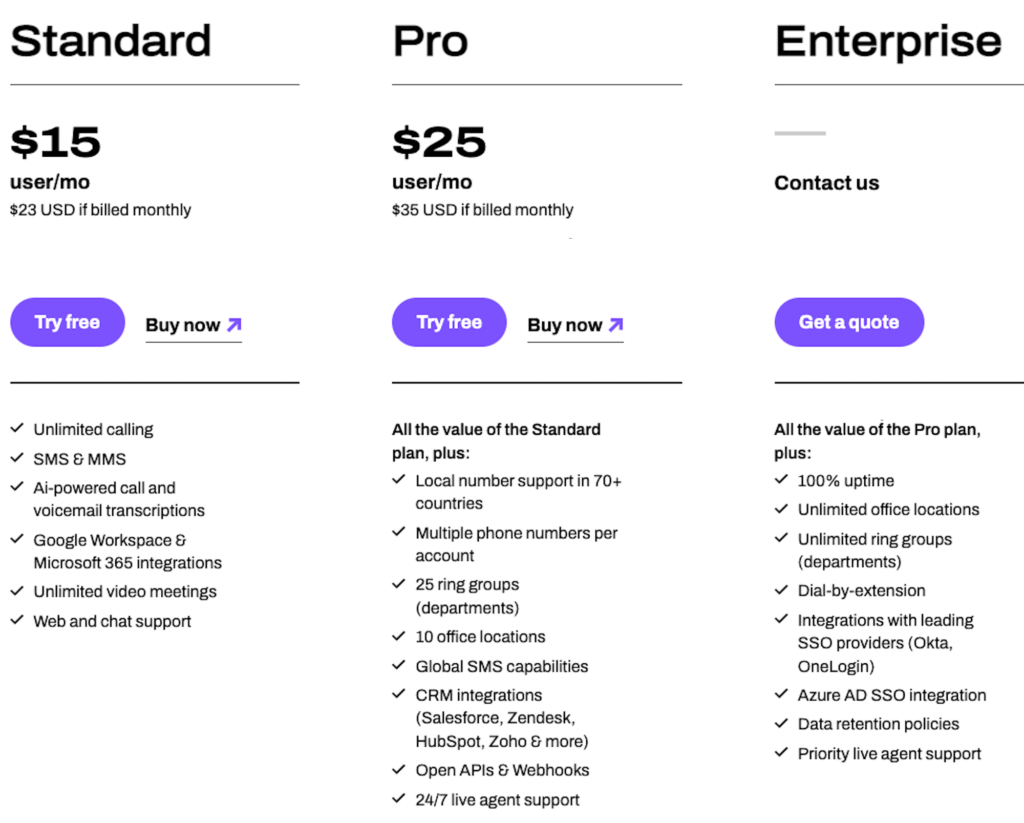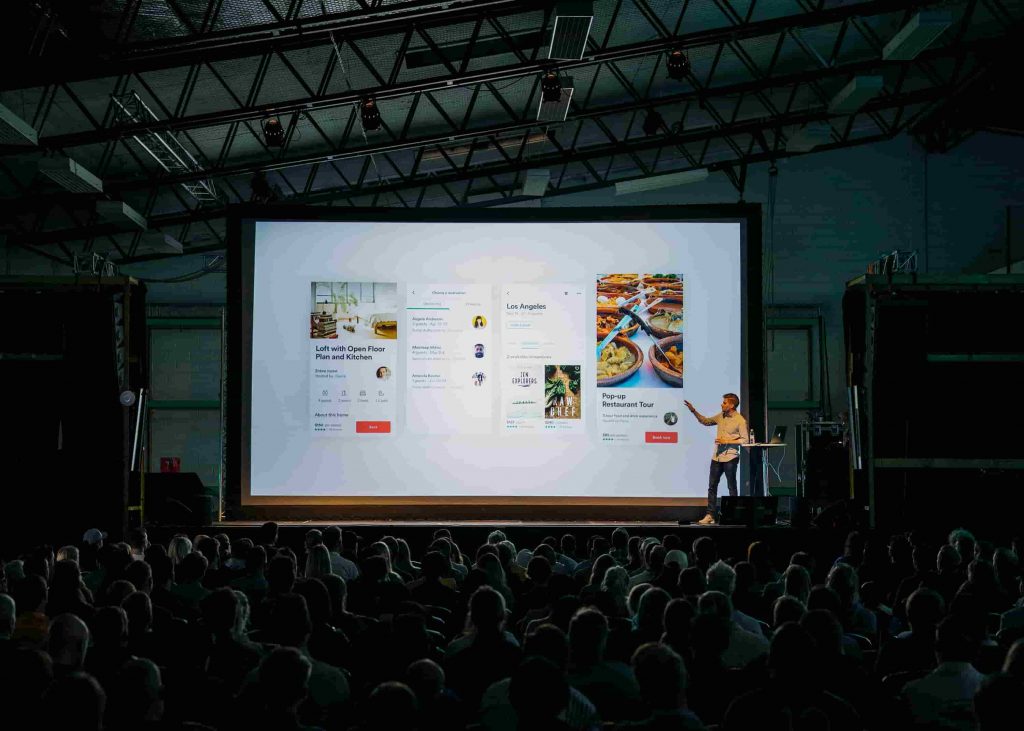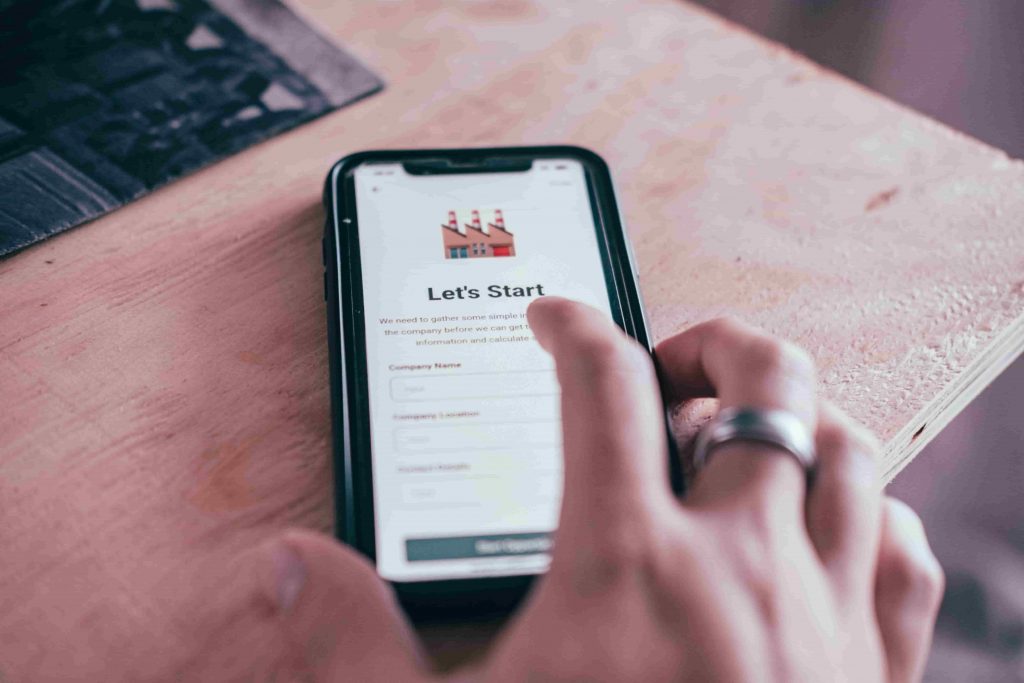The Complete 5-Step Process of An Effective High-Touch SaaS Sales Pipeline
If you’re building a SaaS product, chances are you’re trying to make money.
It’s important to have an effective sales process to ensure that you’re constantly getting new customers, and therefore more money, into your business.
This post is going to demonstrate the 5 key steps of an effective high-touch SaaS sales process.
If you’ve already got a sales pipeline in place for your company, check out our sales funnel optimisation guide.
If you’re looking to create a high-performing SaaS sales pipeline and prefer to watch rather than read, check out this great video by Rob Walling.
What is a Sales Pipeline?
A sales pipeline is a visual representation of the progression of potential customers, also known as leads, through various stages towards becoming paying customers.
It helps sales teams organize and monitor their sales activities, from initial contact to closing deals, providing a clear overview of the sales process and the status of each prospect.
Why Should I Invest In a Sales Pipeline for My Startup?
I’ve used sales pipelines in all of the businesses that I’ve run, and they’ve been vital in helping me identify the steps that I need to take in order to turn qualified leads into customers. This has been incredibly useful when I’ve onboarded additional staff to help with my marketing efforts as the process has already been documented for them to refer to.
On top of that, pipelines have also been really useful when optimizing the sales process. By clearly laying out what each step is, it helps you identify any bottlenecks quickly, which means you can get more customers through your sales funnel quickly.
High Vs Low Touch Sales

While this article mainly addresses high-touch sales techniques, it is useful to understand the difference to optimise your product’s marketing approach.
What are High-Touch Sales?
The high-touch sales model refers to the expensive marketing strategy which requires extensive interaction between a business’ sales team and a client.
This approach typically requires frequent communication including tailored demonstrations and personalised support and onboarding.
Due to the increased personal demands, this sales model is only effective when targeting high-value customers who generate substantial revenue or recurring income.
High-touch sales pipelines include:
- Email nurture campaigns: Use strategic email sequences to nurture leads, onboard new customers, and re-engage churned users.
- Effective in-app messaging: Deliver contextual and tailored messages within your product to drive feature adoption, account expansion, and customer satisfaction.
- Strong social media presence: Engage with customers on social media platforms, encourage personal interactions, and create community-driven growth.
- Customer education programs: Invest in long-term customer education through resources like whitepapers, eBooks, courses, blog posts, webinars, and research studies to enhance user value and increase retention.
What are Low-Touch Sales?
Low-touch sales, on the other hand, are a sales model that relies on minimal or no interaction between a business’ sales team and a client. In this model, the customer usually takes the lead in the sales process, from initial research and discovery to making a purchase.
Low-touch sales are typically facilitated through a large variety of digital channels, such as websites, paid advertising and product partnerships, where customers can discover a product without the need for personal assistance.
This approach is suitable for all services, especially products that have a lower price point and a simple purchasing process.
Low-touch sales pipelines include:
- Self-Service Websites: Provide a comprehensive website with detailed product information, pricing, and FAQs, allowing potential customers to make informed decisions and complete purchases without direct sales assistance.
- Automated Email Campaigns: Utilize automated email sequences to nurture leads, deliver targeted content, and guide customers through the sales funnel without the need for manual intervention.
- Webinar Demos: Offer pre-recorded demos and webinars that customers can access at their convenience to learn about the product features and benefits.
- Chatbots: Implement chatbots and self-help resources within the product interface to provide instant assistance and guide users through common queries or issues without the need for human interaction.
If a low-touch sales process seems like an ideal process for your business, check out our how-to guide to marketing your startup.
Should You Use a High or Low Touch Sales Pipeline?
Choosing to use a high or low-touch sales method largely depends on your business and how you want to interact with your customers.
From my experience, high-touch sales pipelines are great if you want:
- Stronger customer relationships: By engaging with your customers, you can cultivate stronger relationships between them and your business
- Higher retention and loyalty: This increased communication builds bonds with your customers, meaning that they’ll be much more likely to stay loyal to your brand
- Shorter future sales cycles: Having pre-existing relationships with your customers significantly shortens future sales cycles
- Increased customer lifetime value (LTV): Better bonds with clients mean that they are more inclined to upgrade their subscriptions or switch to long-term plans, which increases their LTV.
However, low-touch sales pipelines are great if you want:
- Scalability: As there’s little to no manual processing of customers, it’s incredibly quick and easy to scale your sales process as demand grows.
- Cost Efficiency: Fewer people working on your sales process means less cost for getting your new customers onboarded.
- Faster Sales Cycles: As customers review your services independently, your sales cycle will be a lot shorter once they’ve committed
Ultimately, there is no one-size-fits-all answer to this question.
I’ve generally found that a hybrid approach works well, where you blend elements of both high-touch and low-touch processes to cater to different customer segments or stages of the sales cycle.
Using a low-touch pipeline for the lower-value plans of your business and a high-touch one for enterprise customers (such as in the screenshot below) is a tried and trusted method for optimising your pipeline.

It’s important to regularly evaluate and adapt your sales processes based on customer feedback, market dynamics, and business goals to make sure that your pipeline is always working for you.
You can learn more about optimizing your existing sales pipeline here.
The 5-Step High-Touch Sales Pipeline
So, now we understand what a high-touch sales pipeline is, and who we should focus it on, let me show you my simple 5-step high-touch sales pipeline.
1. Lead Generation

The first step of my high-touch sales pipeline is to identify the right leads for you to target.
There are 2 types of leads to focus on:
- Inbound Leads: Potential customers who have initiated contact with your company
- Outbound Leads: Potential customers that your business reaches out to
While inbound leads are typically easier to convert to sales as they’re already interested in your brand, in my experience it takes a lot longer to build an effective inbound lead strategy.
As a result, I’d recommend that you focus on both inbound and outbound strategies so that you start to see results in the near future (through more outbound reach) and get easier prospects in the long term through continued effort on inbound lead generation techniques.
“But how do I get started creating inbound and outbound leads?” I hear you ask.
Let’s cover that now.
How Do I Get Outbound Leads For My Business?
Outbound leads require a significant amount of time and/or money to acquire as they involve reaching out to customers who are normally cold (don’t know/trust your business).
I’ve found that the 3 most effective methods for collecting outbound leads for my business are:
- Direct Email Campaigns: Sending heavily customized emails to potential leads giving lots of information about the product and how it can specifically help them.
- LinkedIn Outreach: Like email outreach, I’ve used LinkedIn a lot to connect with prospects (e.g. CEOs of tech firms I’m targeting) and send them relevant information about our product.
- Event Sponsorship and Speaking Engagements: If you can afford it, sponsoring relevant industry events and securing speaking opportunities at these events can be a great way to highlight your brand and products to hundreds, if not thousands of interested people.
It’s important to remember that outbound outreach involves getting in touch with busy people who don’t know your brand or products yet. As such, to improve your success rates, I’d recommend:
- Be Concise: Busy people don’t have time to read 10 paragraphs of content.
- Keep It Simple: Likewise, people become disengaged with walls of text with complex language, so keep it simple
- Be Specific: Make sure you’ve done your homework on the person and adjust your copy to target your prospect
- Explicitly Mention How It Benefits Them: People generally only care about themselves. As such, make sure you explicitly mention exactly how your product helps your prospect or they won’t respond
How Do I Get Inbound Leads For My Business?
As I mentioned earlier, inbound leads are mainly your long-term marketing option to give you easier conversions.
That’s because, with inbound leads, customers have already stumbled across your brand, trust you and your product and are interested in buying your product before they get in contact.
Seems like it should be easy then, right?
Well, while it leads to easy sales, it requires a lot of long-term work and commitment to get potential customers to find your business organically.
From my experience of starting multiple online businesses, the best 5 ways of connecting with customers organically to generate inbound leads is with:
- Search Engine Optimization (SEO): Optimizing the content on your website to rank higher on search engines, such as Google. I’ve written a 5-part guide to doing this here, which I’d recommend you check out if you’re interested in this.
- Content Marketing: Producing valuable content such as blog posts, articles, videos, infographics, and eBooks can attract your target market.
- Social Media Marketing: Building an active presence on social media platforms allows you to engage with your audience and use targeted ads to build trust and reach your audience.
- Email Marketing: Capturing customer email addresses by creating lead magnets (such as free eBooks and templates) can help build trust and engagement with your audience.
2. Lead Qualification
After you’ve got some potential leads, it’s time to qualify and prioritize them in order to make sure you don’t waste time on leads that will fall through.
In my experience, the quickest and easiest way to qualify a lead is to score it against the BANT criteria. BANT stands for:
- Budget: How much money is the lead willing to put towards the purchase?
- Authority: Does the lead have the decision-making authority to make the purchase?
- Need: How much does the lead need your product?
- Timeline: What’s the lead’s timeline for making a purchase?
While authority is a simple yes or no check (as if your contact can’t make a purchasing decision, you need to get in contact with someone who can), you should score the other 3 criteria out of 10, with the prospect that is willing to spend the most to get the product incredibly quickly because they need it getting the highest score.
For example, if I have 3 clients, where Client A needs a product quickly with a low budget, Client B is only partially interested in the product but has a high budget, and Client C has a high budget and a high need, my table might look something like this:
| Client | Budget | Authority | Need | Timeline | Total |
| Client A | 3 | Y | 7 | 8 | 18 |
| Client B | 8 | Y | 2 | 4 | 14 |
| Client C | 9 | Y | 6 | 7 | 22 |
As you can see, this table clearly shows the priority that your sales team should focus on your leads, with Client C taking priority.
What’s more, you can also set lower-limits to hide leads which fail to make a certain score. For example, you may find that leads with scores of under 15/30 are very unlikely to be much of an investment for your business (either through a low budget or increased risk) so they get dropped from the table completely.
It’s important to review your lead qualification method regularly to ensure that it’s acurately prioritizing the leads that you want to focus on. I’ve found in some of my businesses that I need to add weights to certain aspects of BANT to prioritize things further.
3. The Pitch

Once a lead has been qualified to be a good match for the product, a sales representative (or maybe even the founder for very big clients) should book a pitch to demonstrate the product to the potential client.
The demo is a critical opportunity to showcase the product’s features and benefits by showing how it can meet the client’s specific needs.
The demo should be relatively short, lasting between 10-15 minutes, and should leave plenty of time to ask questions of the client to understand their exact use case.
The answers to these questions should shape the demo, as the founder only needs to show off the features of the product that directly relate to the client.
When demoing products myself, I’ve found the following tips incredibly useful:
- Begin With a Success Story: I like to start my demos with a success story of one of our other clients. This helps to convince the lead that the product actually works, and gives me an opportunity to showcase a testimonial or too as well!
- Make The Demo Interactive: Incorporating a hands-on section with the lead allows them to experience the core features and feel like they already own the product.
- Challenge the Client: During the demo, present a common problem or challenge the client may face in their industry. Showing how easy the solution is with your product is bound to win them over!
4. The Close
Closing the sale is the penultimate process of this high-touch sales pipeline which involves persuading a prospective customer to purchase your product.
The founder or salesperson who conducted the demo in the last step needs to continue the conversation by following up a few days later and asking if they have any followup questions and trying to proceed with the sale.
The salesperson should make an offer that is tailored to the customer and could include a special discounts or free trial.
A base follow-up email template that I use is the following:
Dear [Client’s Name],
It was a pleasure to demonstrate [Your Product] to you recently, and I wanted to express our gratitude for your time and interest.
Please let me know your thoughts on the product, especially surrounding [List 3 features that are especially important to the client].
Given your order quanity of [how many orders], we would be happy to work on a price of [give price].
Let us know your thoughts and we can write up a purchase agreement.
Kind regards,
[Your Name]
5. After-Sales Care

It’s important to make sure that you don’t lose your customers once they’ve got this far through your sales process.
Whether your business is online or a physical product, for your high-value sales, it’s important to contact your customers to make sure they’re happy with their product and see if there are any teething issues that you can help to solve.
In my experience of developing software businesses, I’ve had countless occasions where customers have encountered an issue with the product or not been sure how to use a certain feature.
Instead of contacting me, they became frustrated or lost interest in the product. Had I not contacted them to offer post-sales support, I could have easily lost business and reduced my brand’s reputation due to small, easily-fixable issues.
Key Takeaways
- Building a successful SaaS product requires a well-structured sales process to acquire new customers and generate revenue consistently.
- A sales pipeline is a visual representation of the customer journey, helping sales teams track and manage leads from initial contact to closing deals.
- Sales pipelines provide clarity, facilitate the onboarding of new staff, and help identify and resolve bottlenecks, optimizing the sales process.
- High-touch sales involve extensive interaction with customers and are ideal for high-value clients, while low-touch sales require minimal interaction and work well for lower-priced products.
- Combining elements of both high-touch and low-touch sales processes can cater to different customer segments and stages of the sales cycle, offering scalability and cost efficiency.
- My 5-Step High-Touch Sales Pipeline:
- Lead Generation: Identify and prioritize leads through inbound and outbound strategies.
- Lead Qualification: Use the BANT criteria (Budget, Authority, Need, Timeline) to score and prioritize leads.
- The Pitch: Deliver a focused, interactive product demonstration tailored to the client’s needs.
- The Close: Follow up with a personalized offer and engage in negotiations to secure the sale.
- After-Sales Care: Ensure customer satisfaction by offering post-sales support and addressing any issues.
- Regularly review and adjust your sales processes based on customer feedback, market changes, and business goals to maintain effectiveness.
- While outbound leads are valuable, investing in inbound lead generation methods like SEO, content marketing, social media, and email marketing can lead to easier conversions over time.
Overview
Now that you’ve understood the techniques required to create an effective sales process for your SaaS, take a look at our list of busted business myths, or see our creative marketing ideas to kickstart your sales pipeline.
If you’ve already got a sales pipeline in place, take a look at our guide to optimising your pipeline to increase sales.







